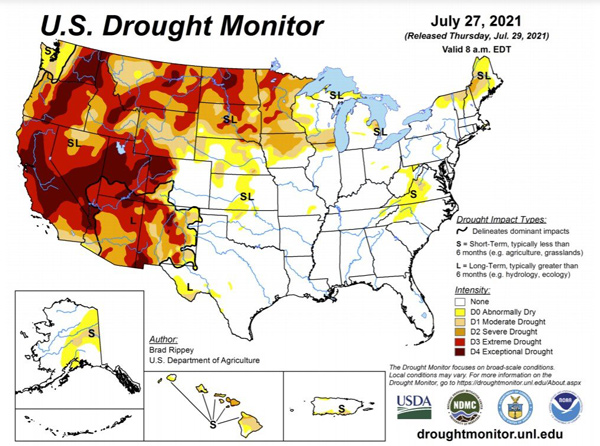Breath of life? Scientists claim that air pollution could age your lungs by two years
08/27/2020 / By Evangelyn Rodriguez

It’s well known that air pollution increases the risk of respiratory illnesses. A recent study by Canadian and European researchers, however, has found that air pollution also ages the lungs.
Using data from more than 300,000 individuals, the researchers explored the negative impact of air pollution and found that exposure to high levels of air pollutants reduces lung function to an extent equivalent to two years of aging.
The researchers also found that air pollution increases the risk of chronic obstructive pulmonary disease (COPD), a life-threatening set of respiratory illness that affects the lungs. This was particularly true for people who are obese and low-income earners.
Details of the study were published in the European Respiratory Journal.
Fast facts about COPD
COPD is a disease that commonly affects middle-aged and older adults, especially those who smoke. Two conditions cause the airway obstruction that characterizes COPD: emphysema, which damages the air sacs in the lungs, and chronic bronchitis, which causes long-term inflammation of the airways. Together, these conditions cause significant lung damage as well as symptoms that worsen over time. Some common signs of COPD include shortness of breath, wheezing, chest tightness, chronic cough and frequent respiratory infections.
Long-term exposure to air pollutants, such as particulate matter, irritating gases and cigarette smoke, is said to be the main cause of COPD. Studies have also linked the disease to an increased risk of chronic conditions, such as heart disease and lung cancer. According to a report by the World Health Organization (WHO), about 65 million people suffer from COPD, and three million die from it annually. This makes it the third leading cause of death worldwide.
Despite the established link between air pollution and respiratory diseases, evidence of the former’s effect on lung function is surprisingly lacking. According to Anna Hansell, a professor of environmental epidemiology at the University of Leicester and the study’s senior author, only a few studies have looked at how air pollution affects lung health. For this reason, Hansell and her colleagues decided to examine whether exposure to air pollutants is linked to changes in lung function and whether it also influences the risk of COPD.
Air pollution ages the lungs
For their study, the researchers used data from the UK Biobank, a major international health resource for scientists, on 303,887 individuals aged 40 to 69. The data included detailed answers to health questionnaires as well as the results of spirometry tests, which were used to measure the participants’ lung function.
The researchers performed cross-sectional analyses to estimate the levels of pollution the participants were exposed to in their homes at the time of their enrollment in the UK Biobank study. The researchers focused on three main pollutants, namely, particulate matters with large and small diameters (PM10 and PM2.5) and nitrogen dioxide, a gaseous air pollutant produced when fossil fuels like coal, gas or diesel are burned.
The researchers considered each participants’ age, sex, body mass index (BMI), income, educational attainment, smoking habit and exposure to secondhand smoke in their analyses. They also looked at the participants’ occupations and whether their work environments affected their risk of COPD. (Related: It’s in the air: Air pollution can increase the risk of atherosclerosis, study says.)
The results of their analyses suggest that high exposure to all three pollutants significantly decreases lung function. For every five micrograms per cubic meter (mcg/m3) increase in PM2.5 levels the participants were exposed to annually, the researchers measured a decline in lung function similar to the effects of two years of aging. They also found a stronger association between lung function and air pollution in males, at-risk individuals and those from low-income households.
With regard to COPD risk, the researchers found that, compared with those exposed to passive smoking at home, COPD risk was four times higher among participants residing in areas with PM2.5 levels above WHO guidelines. The prevalence of COPD among these individuals was half of that found in participants who used to be smokers. The researchers noted that the association was stronger for participants who were obese, had lower incomes and were non-asthmatic.
Lung function naturally decreases with age; but this study shows that exposure to air pollution can accelerate lung aging and increase a person’s risk of COPD. As per the guidelines set by the European Union, PM2.5 levels should not exceed 25 mcg/m3, but this limit is higher than the levels associated with reduced lung function in the study. Experts are therefore calling for governments to ensure that the maximum air pollutant levels (10 mcg/m3) set by the WHO are not breached across towns and cities.
Sources include:
Submit a correction >>
Tagged Under:
air pollutants, air quality, chronic obstructive pulmonary disease, COPD, environment, fossil fuels, lung aging, lung function, lung health, particulate matter, PM2.5, research, respiratory disease, stop smoking
This article may contain statements that reflect the opinion of the author
RECENT NEWS & ARTICLES
COPYRIGHT © 2017 ENVIRON NEWS





















